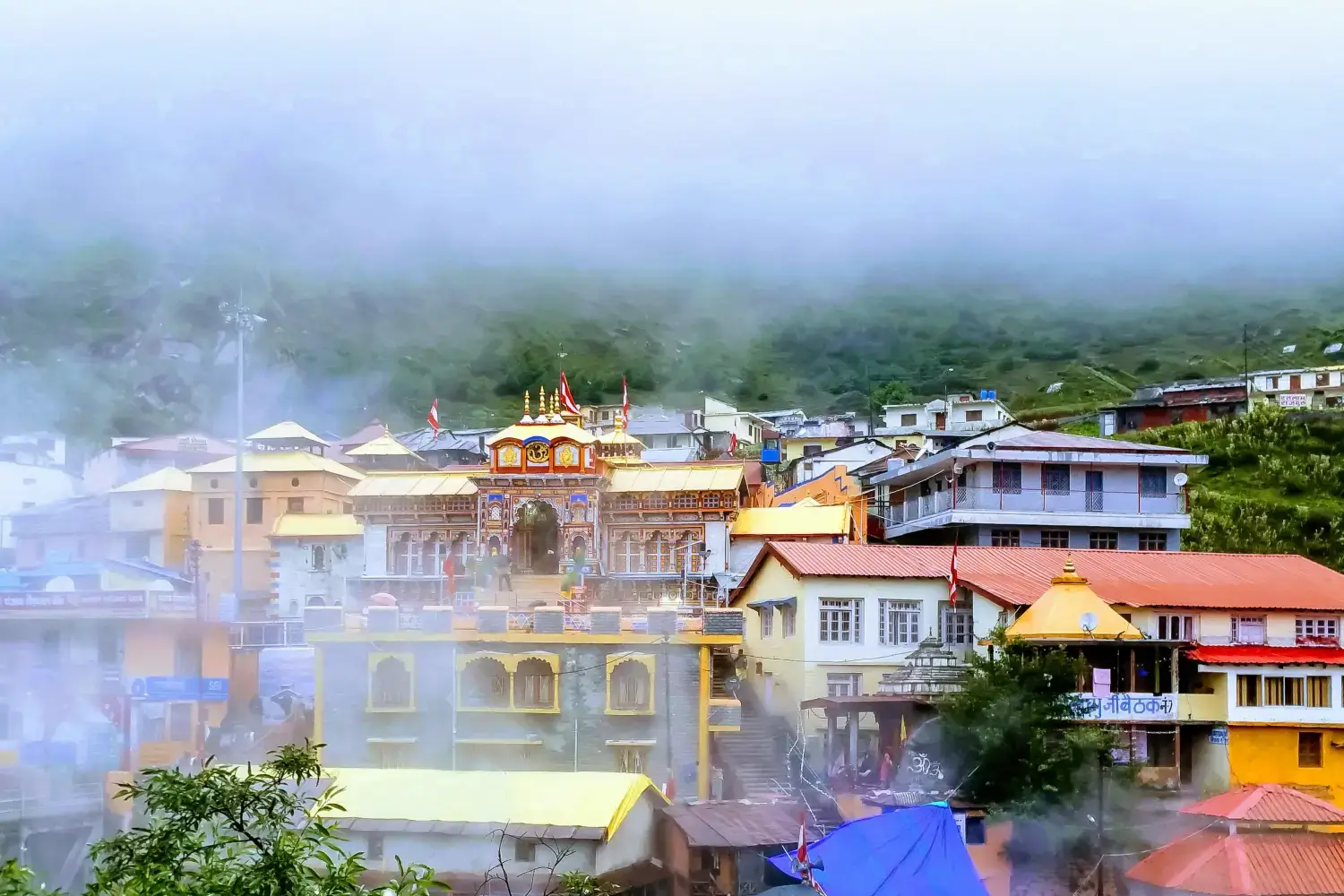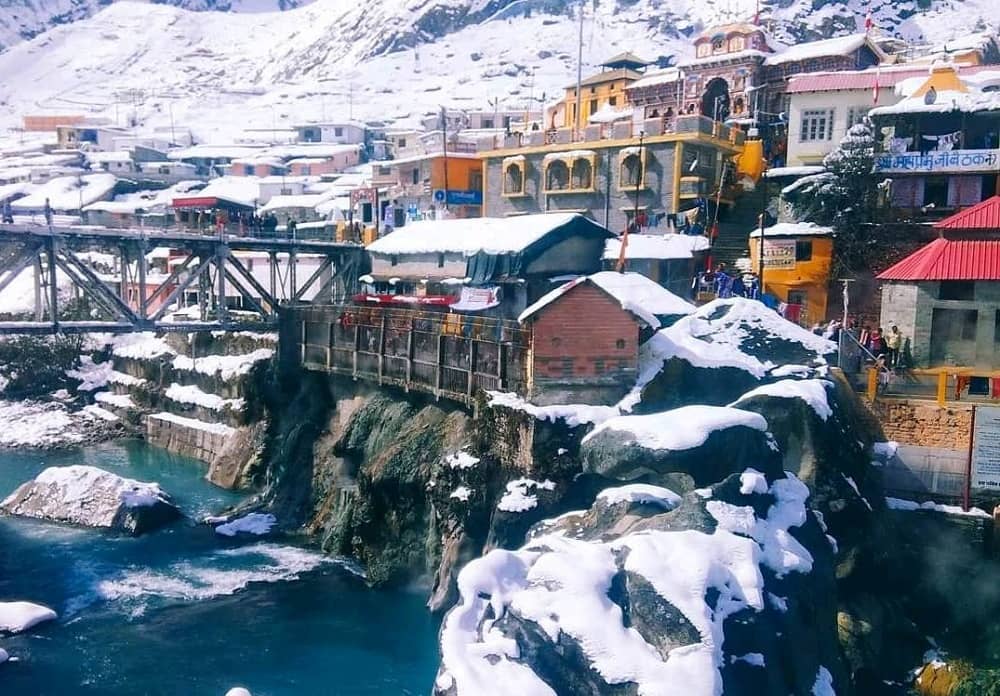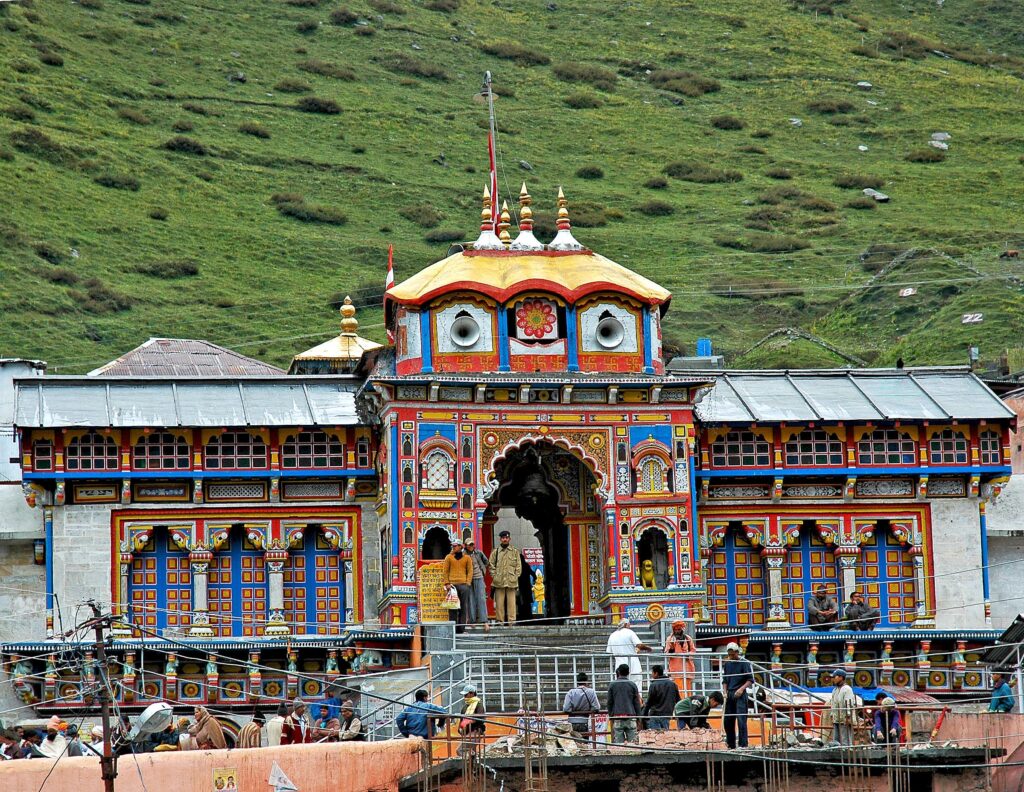Nestled in the lap of the Garhwal Himalayas at an elevation of 3,133 meters, Badrinath in Uttarakhand is a revered pilgrimage site and a jewel of natural beauty. Located in the Chamoli district along the banks of the Alaknanda River, this ancient town is home to the Badrinath Temple, one of the holiest shrines in Hinduism and a key destination in the Char Dham pilgrimage circuit. Surrounded by the majestic Nar and Narayan mountain ranges, Badrinath offers a unique blend of spirituality, history, and breathtaking landscapes. In this comprehensive guide, we’ll explore Badrinath’s significance, attractions, travel details, and why it’s a must-visit in 2025.

Badrinath: A Spiritual and Historical Legacy
Badrinath’s history stretches back thousands of years, rooted in Hindu mythology. The Badrinath Temple, dedicated to Lord Vishnu in his form as Badrinarayan, is believed to have been established by Adi Shankaracharya in the 8th century. According to legend, Lord Vishnu meditated here to atone for his earthly deeds, and the site was named “Badri” after the wild berries (badri) that once grew in abundance. The temple’s vibrant architecture and serene setting have made it a spiritual beacon for millions of devotees.
Beyond its religious importance, Badrinath’s location amidst snow-capped peaks and gushing rivers adds a layer of natural grandeur, drawing travelers seeking both divine blessings and Himalayan splendor.

Why Visit Badrinath?
The Badrinath Temple
The heart of Badrinath, this temple is a masterpiece of Garhwali architecture with its colorful facade and gold-gilded roof. The sanctum houses a black stone idol of Lord Vishnu, believed to be self-manifested. Open from late April or early May to November (closed in winter due to snow), the temple attracts pilgrims for its daily rituals, including the Abhishek and Aarti.
Natural Wonders
Badrinath is framed by the Nar and Narayan peaks, with the Neelkanth Peak (6,596 meters) forming a stunning backdrop. The Alaknanda River flows alongside, its turquoise waters adding to the town’s charm. Nearby hot springs like Tapt Kund offer a soothing dip, believed to have medicinal properties.
Gateway to Adventure
Badrinath serves as a base for treks like the Valley of Flowers and Hemkund Sahib. Its proximity to Mana Village, the last Indian village before the Tibet border, adds an element of cultural exploration.
Best Time to Visit Badrinath
Badrinath is accessible from late April or early May to mid-November, when the temple opens after the winter closure. The best time is:
- May to June: Pleasant weather (8°C to 18°C) and fewer crowds before the monsoon.
- September to November: Post-monsoon clarity with crisp air and stunning views.
- July to August: Monsoon season brings lush greenery but also landslide risks, so plan cautiously.
Winter (December to April) sees heavy snowfall, closing the temple and roads, making it inaccessible until the next season.

How to Reach Badrinath
By Air
Jolly Grant Airport in Dehradun, 314 kilometers away, is the nearest airport. From Dehradun, hire a taxi or take a bus to Badrinath via Joshimath (10-12 hours).
By Train
Rishikesh Railway Station, 297 kilometers from Badrinath, connects to major cities. Buses and taxis from Rishikesh to Badrinath take 10-11 hours.
By Road
Badrinath is 25 kilometers from Joshimath and well-connected to Haridwar (320 km), Rishikesh (297 km), and Dehradun (314 km) via NH58. State buses, private taxis, and shared jeeps ply regularly, offering scenic drives through the Himalayas.

Top Attractions in and Around Badrinath
- Tapt Kund: A natural hot spring near the temple, ideal for a pre-darshan bath, believed to cleanse body and soul.
- Mana Village: 3 kilometers away, this quaint village is India’s last inhabited settlement before the Indo-Tibetan border. Visit the Vyas Gufa and Ganesh Gufa, linked to the Mahabharata.
- Neelkanth Peak: A majestic pyramid-shaped peak, visible from Badrinath, revered as the “Garland of Lord Vishnu.”
- Charan Paduka: A rock with Lord Vishnu’s footprint, a short trek from the temple.
- Brahma Kapal: A riverside platform used for ancestral rites, steeped in spiritual significance.
Nearby Destinations
Joshimath
25 kilometers away, Joshimath is a bustling town and a base for Auli and other treks. It’s home to the Shankaracharya Math.
Auli
40 kilometers from Badrinath, Auli is a skiing paradise with stunning Himalayan views, reachable via Joshimath.
Valley of Flowers and Hemkund Sahib
A 25-kilometer drive to Govindghat leads to these iconic sites—a floral wonder and a Sikh shrine—perfect for a combined pilgrimage.

Accommodation and Food
Badrinath offers basic guesthouses, dharamshalas, and budget hotels like GMVN Tourist Rest House. Book in advance during peak season (May-June). Food is simple—vegetarian meals like dal, rice, roti, and sabzi—at local dhabas and ashrams. Alcohol and non-vegetarian food are prohibited due to the town’s sanctity.
Travel Tips for Badrinath
- Clothing: Pack warm layers, especially for early morning temple visits. Summer requires light woolens, while autumn calls for jackets.
- Fitness: The high altitude may cause breathlessness; acclimatize in Joshimath if needed.
- Temple Etiquette: Dress modestly, remove shoes, and follow queue systems during darshan.
- Permits: No special permits are required, but carry ID for registration at checkposts.
- Eco-Respect: Avoid plastic and maintain the town’s sanctity by disposing of waste responsibly.
Why Badrinath Beckons
Badrinath is more than a pilgrimage—it’s a journey into spirituality and nature’s embrace. Its ancient temple, serene rivers, and Himalayan vistas create a soul-stirring experience. Whether you seek divine blessings or a tranquil escape, Badrinath delivers a timeless connection to India’s heritage.
Badrinath in Uttarakhand is a sacred haven where faith meets the grandeur of the Himalayas. From its hallowed temple to its pristine surroundings, it’s a destination that resonates with pilgrims and travelers alike. Plan your visit, embrace the journey, and let Badrinath’s divine aura envelop you.



